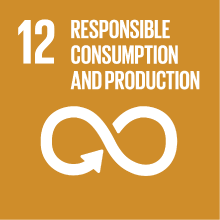ORGANIC CHEMISTRY LABORATORY AND 3 -MOD.1
- Academic year
- 2020/2021 Syllabus of previous years
- Official course title
- CHIMICA ORGANICA 3 E LABORATORIO - MOD.1
- Course code
- CM0331 (AF:332915 AR:175290)
- Teaching language
- Italian
- Modality
- On campus classes
- ECTS credits
- 6 out of 12 of ORGANIC CHEMISTRY 3 AND LABORATORY
- Degree level
- Master's Degree Programme (DM270)
- Academic Discipline
- CHIM/06
- Period
- 2nd Semester
- Course year
- 1
- Moodle
- Go to Moodle page
Contribution of the course to the overall degree programme goals
It provides advanced skills in organic chemistry to address synthetic problems by dealing with the design of complex organic syntheses as well as with the mechanistic and green aspects.
Expected learning outcomes
i) Classification of reactions according to the different types of selectivity.
ii) knowledge of methods for studying the mechanisms of organic reactions.
iii) knowledge of several advanced synthesis techniques and of different classes of organic reactions and of their mechanisms.
iv) knowledge of direct and retrosynthetic synthetic strategies.
v) knowledge of the reagents of renewable origin and of their reactivity.
2. Ability to apply knowledge and understanding
i) Ability to predict the possible outcomes of different reactions in terms of selectivity and of how to design the related synthetic sequences.
ii) Ability to design experiments aimed at determining the mechanism of an organic reaction.
iii) Ability to describe different classes of organic reactions in terms of reactants, methods, mechanisms, products.
iv) Ability to analyze directly or retrosynthetically the pathways to obtain a product and be able to propose the related coherent sequence of reactions, identifying the most efficient procedures with the lowest environmental impact.
iii) Ability to design syntheses starting from reagents of renewable origin.
3. Critical skills
i) Ability to identify the reagents and parameters capable of modifying the selectivity of a reaction in the desired way.
ii) Ability to judge whether a reaction mechanism is plausible
iii) Ability to distinguish the most efficient synthetic strategy with the lowest environmental impact.
4. Communication skills
i) Ability to illustrate and explain all aspects of an organic synthesis using the correct scientific terminology and symbology.
ii) Ability to discuss and argue in a logical, coherent and constructive manner with the instructor and with fellow students on the contents of the course.
iii) Ability to explain why certain synthetic paths are chosen rather than others in terms of mechanism, efficiency, and eco-sustainability.
5. Learning skills
i) Ability to exploit the knowledge acquired to contextualize the contents and to connect the different topics with the aim of identifying the various possible synthetic strategies and choosing the most efficient ones.
ii) Ability to take notes, collect and organize knowledge.
iii) Ability to independently identify the salient aspects of scientific reasoning and the concepts expressed in class.
Pre-requirements
Contents
2. Investigation of organic mechanisms [Norman Cap 4; C&S Cap A4]
3. Protecting groups [Laszlo Cap 5, C&S Cap B13.1]
4. Pericyclic reactions: Diels-Alder cycloadditions, dipolar cycloadditions, sigmatropic rearrangements, ene-reactions, chelotropic eliminations, pericyclic transpositions [Laszlo Cap 7; Norman Ch 9; C&S Cap B6]
5. Rings and heterocycles, strained rings [Laszlo Cap 7; Norman Cap 20]
6. Reductions, oxidations, epoxidations [Laszlo Chap 9, 10; Norman Ch 18, 19; C&S Chap 5, 12]
7. Metal-mediated formation of carbon-carbon bonds [Norman Cap 18; C&S Cap B9]
8. Radical reactions, photochemical reactions; formation and reactivity of carbenes, carbocations and carbanions [Norman Cap 16, 17; C&S Cap B10, A12, A13]
9. Rearrangements [Laszlo Ch 13]
10. Multistep synthesis and synthesis from synthons of renewable origin.
Referral texts
[Norman] Richard O. C. Norman, James M. Coxon “Principles of Organic Synthesis” 3rd Edition, Chapman & Hall, London 1993 [3rd edition: doi.org/10.1201/9780203742068] 800 pages; in italiano: Richard O. C. Norman, “Chimica organica: principi ed applicazioni alla sintesi” Piccin, Padova
[C&S] Francis A. Carey, Richard J. Sundberg “Advanced organic chemistry. A: Structure and mechanisms” & B: Reactions and synthesis” 3rd ed., New York, Plenum Press, 1990
Assessment methods
The oral exam consists of questions on the entire program. The student can choose between Italian and English. The student must demonstrate knolwedge of the subject and ability to illustrate the topic using the appropriate scientific language and the ability to correctly write the reactions and the mechanisms. The oral exam lasts between 20 and 40 minutes depending on to the clarity and consistency of the answers.
The following are evaluated: 1) knowledge of the topics (reactions, mechanisms, structures, classifications); 2) understanding (concepts, synthetic strategies, reactivity, connections, logical reasoning); 3) the ability to apply knowledge to problems; 4) the ability to analyze, synthesize and formulate judgments; 5) scientific language.
The final score of the exam consists of the grade of the oral exam of module 1, implemented (in positive or negative) by the grade obtained in the laboratory reports.
Type of exam
Teaching methods
2030 Agenda for Sustainable Development Goals
This subject deals with topics related to the macro-area "Circular economy, innovation, work" and contributes to the achievement of one or more goals of U. N. Agenda for Sustainable Development


